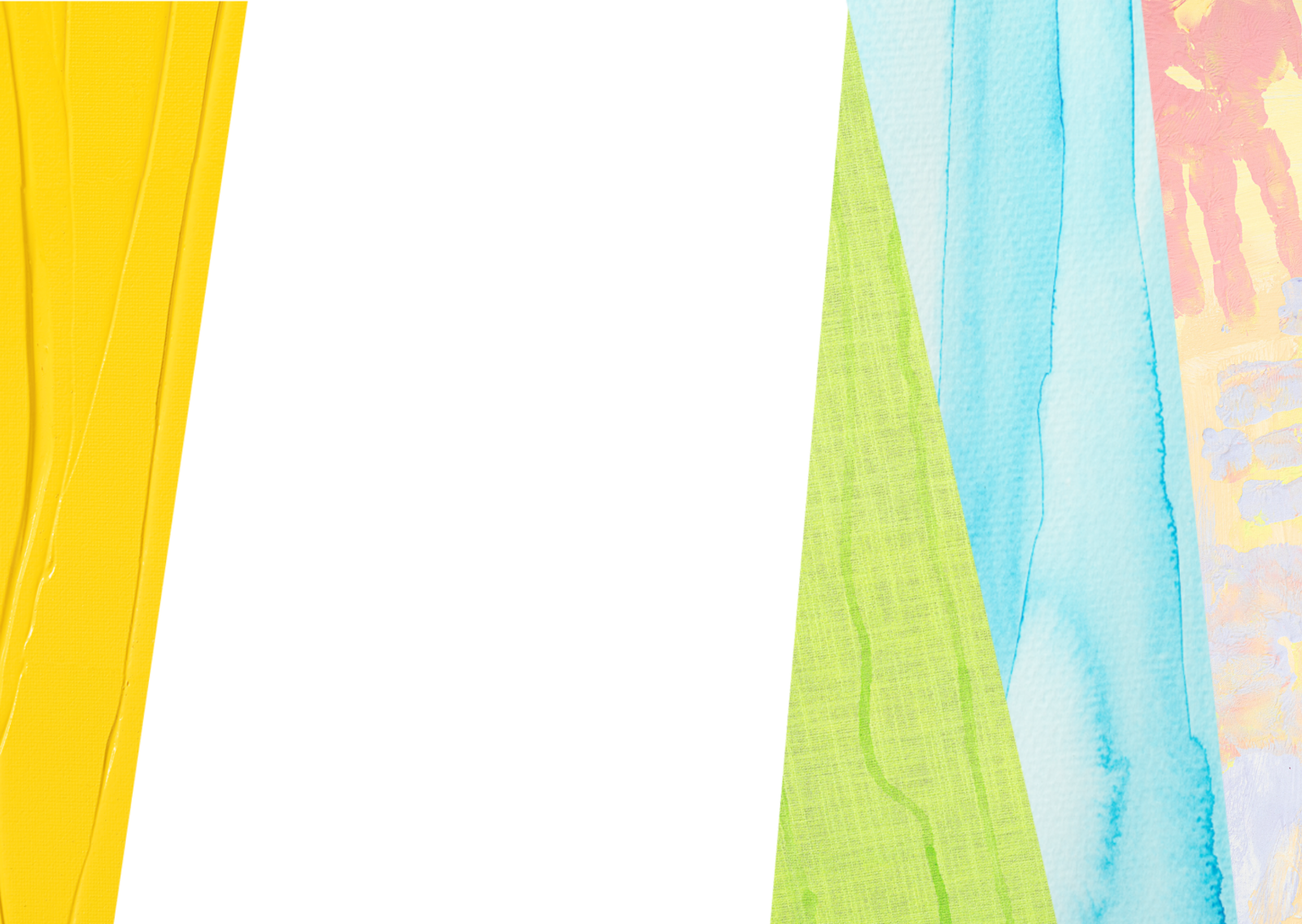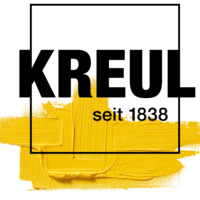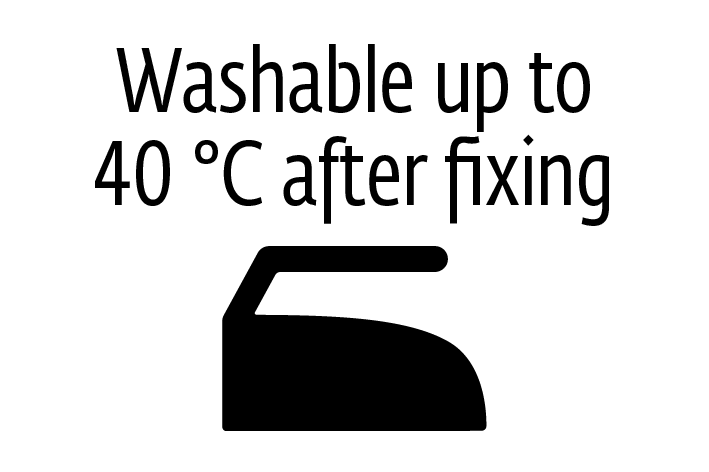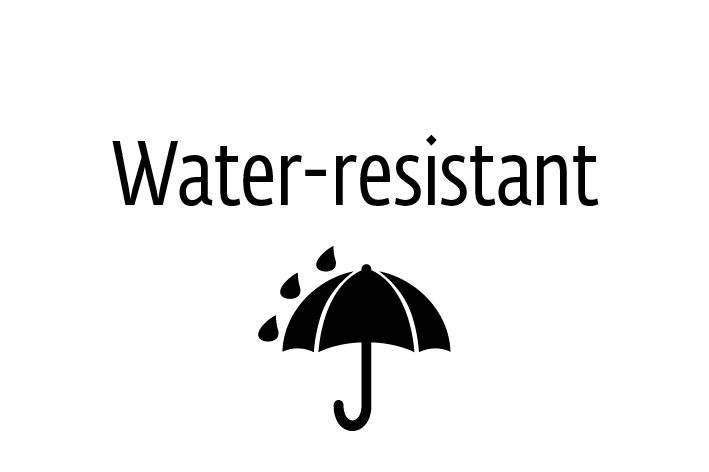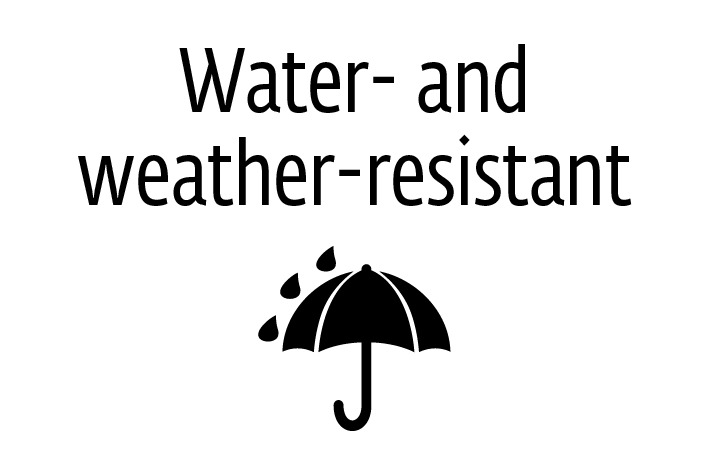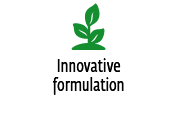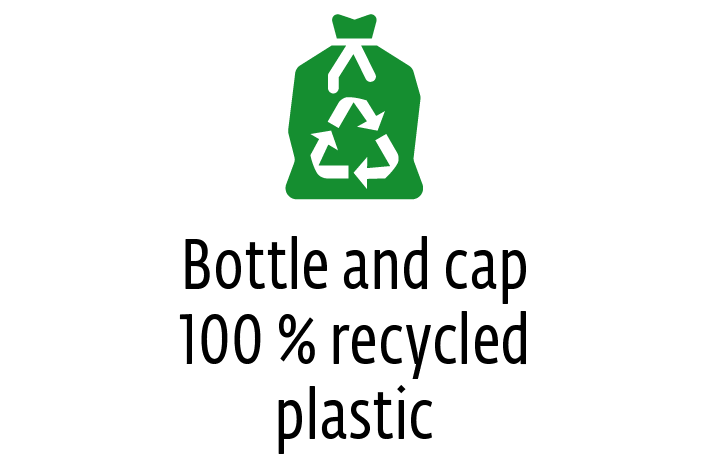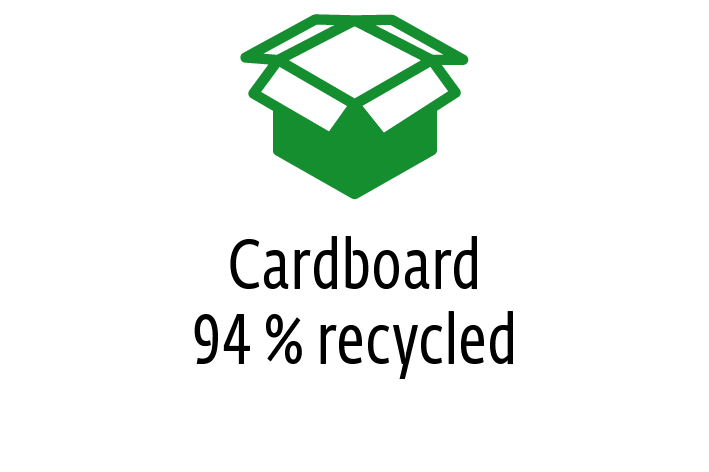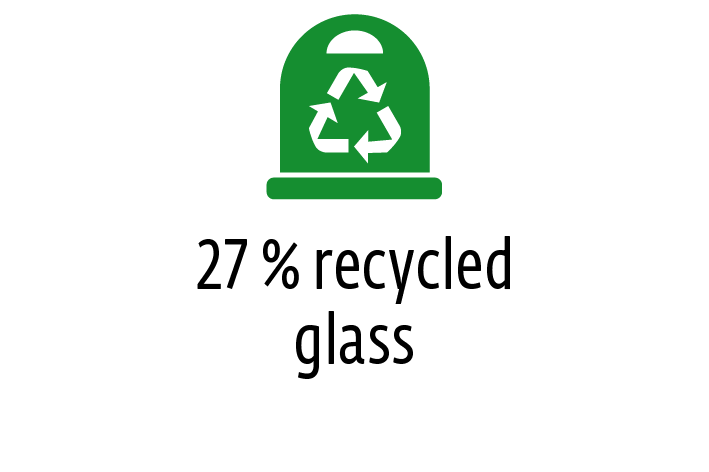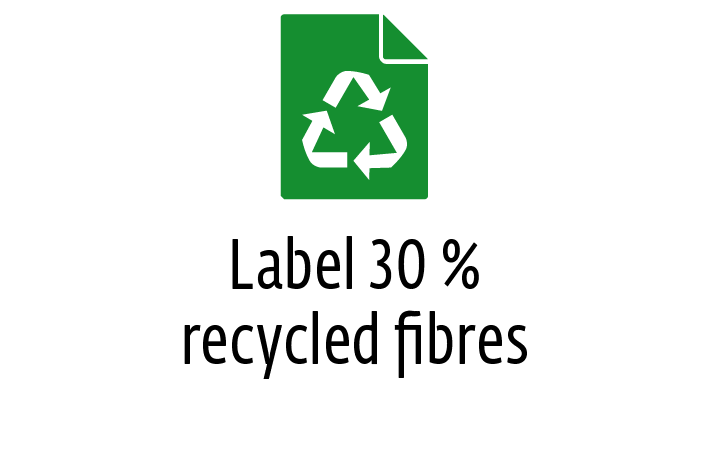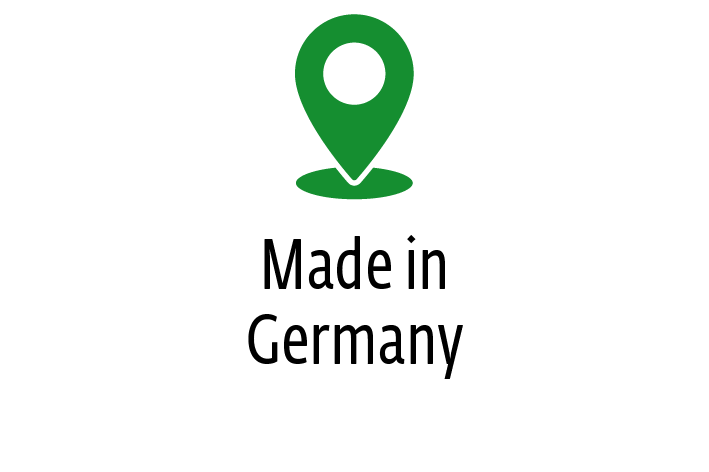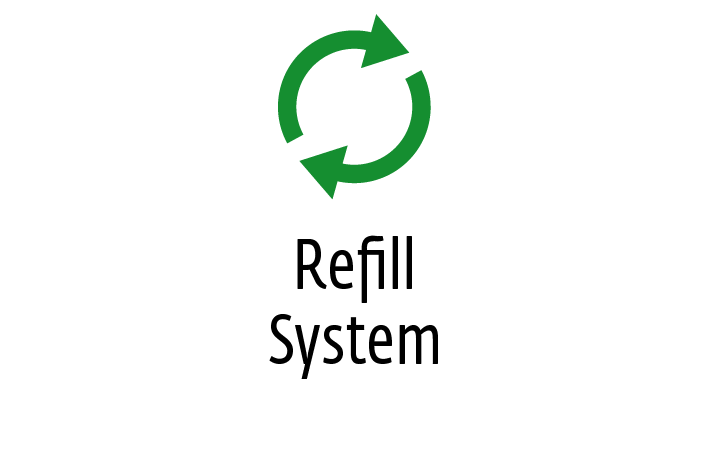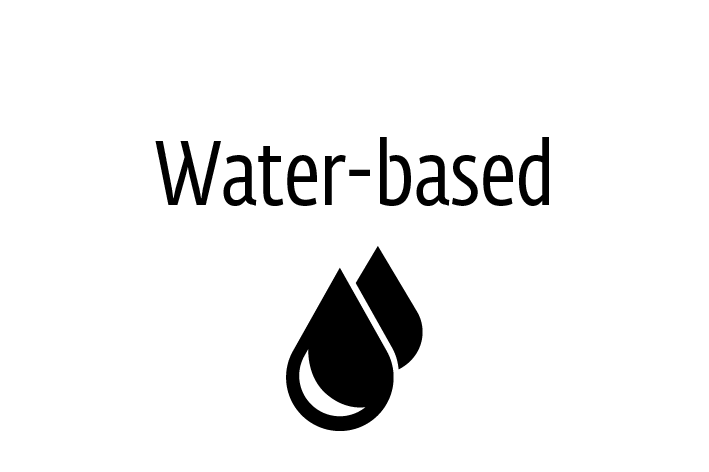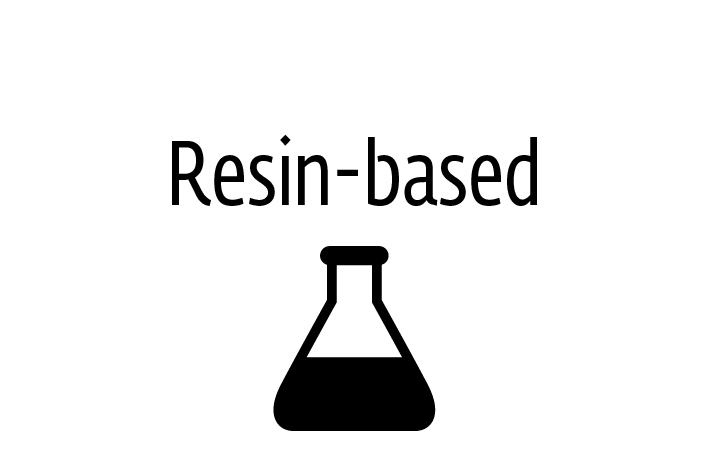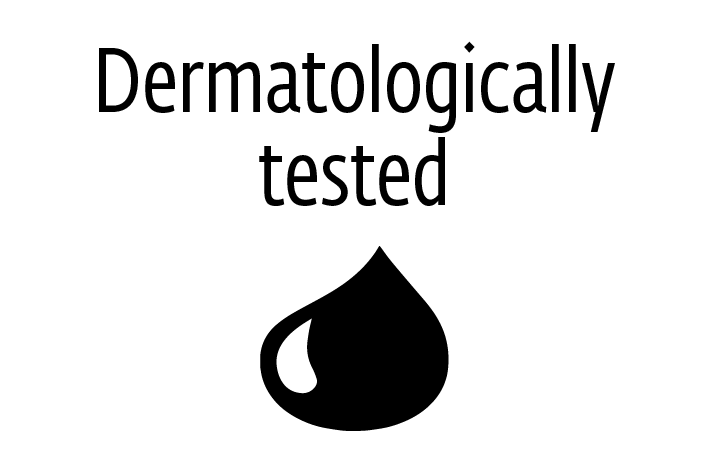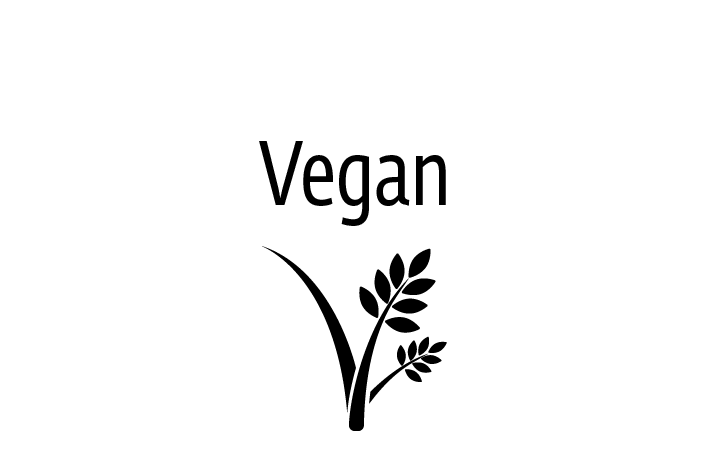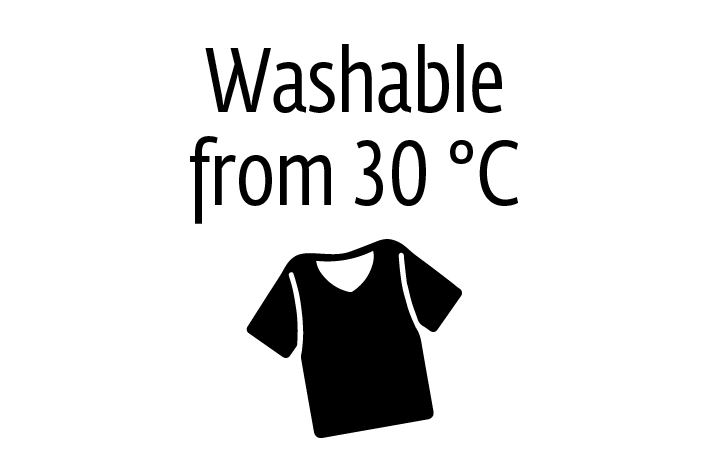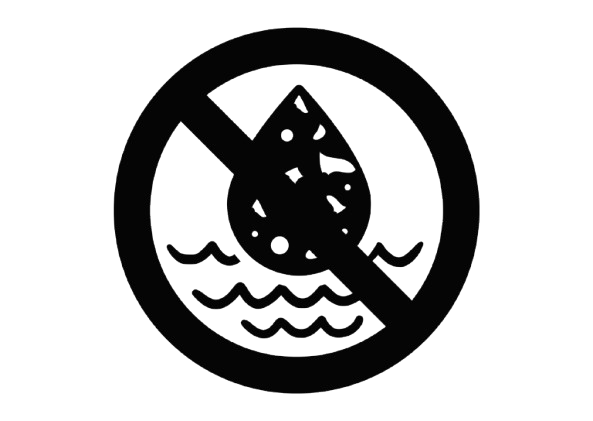Please contact your medical doctor if allergies or intolerance occur. Your doctor will contact us, and we will provide all the necessary information.
In an emergency, please contact the officia Emergency Poison Information Service at the Charité University Medical Center, Berlin:
Emergency Poison Information Service
Charité University Medical Center, Berlin
Phone: 030 19240
Campus Benjamin Franklin
Hindenburgdamm 30
12203 Berlin, Germany
Voluntary labeling
Voluntary labeling includes characteristics and criteria that make it easier to facilitate a purchasing decision, and are intended to provide production information that help customers make a choice. The company decides whether to provide this information.
Innovative formulation
The formulation contains innovative raw materials from renewable sources or natural materials. For example, our Glass & Porcelain range contains a binding agent based on vegetable oil, the transfer marker is based on a by-product of beet production and, where necessary, we use bioethanol of German origin. It goes without saying that the extraction of these innovative ingredients must not compete with food production.
Statutory labeling
As a German manufacturer, we are obliged to label products and to indicate legal specifications on labels and packages. This is how legislation guarantees the transparency necessary for the protection of health and the environment. This applies, for example, to allergies as well as to the proper disposal of the products used.
CE is an abbreviation of Communauté Européenne (European Community) and indicates that a product with this mark complies with the relevant European safety regulations.
In our case, this is the EU Toy Safety Directive (2009/48/EC) and EN 71.
GHS/CLP
GHS stands for Globally Harmonized System of Classification Labeling and Packaging of Chemicals, and serves to provide consumers with more transparent information. Implementation was effected in accordance with EC Regulation (No.1272/2008), also known as the CLP Regulation.
The following symbols are the hazard pictograms contained in the CLP Regulation:
Some products in the KREUL range bear the hazard statement EUH208: “Contains (name of sensitizing substance). May produce allergic reaction.” The sensitizing substance is the preservative protecting against microbial contamination, and therefore guaranteeing shelf life.
This symbol indicates that the product contains microplastics as defined in Annex XVII of Regulation (EC) No. 1907/2006 (“REACH”) (e.g. glitter particles).
KREUL paints marked with the microplastic pictogram contain microplastics, e.g. in the form of glitter. These microplastic particles are enclosed in a solid film during the drying process and remain permanently on the painting surface. Microplastics become a cause for concern when they enter the water cycle. This is the case when painting tools are cleaned under running water at the sink. To prevent the release of microplastics into the environment, we recommend here how to clean painting tools correctly.
- Brush cleaning: We recommend thoroughly wiping used brushes, palette knives or painting knives with a paper towel. This can be disposed of in the residual waste. Paint residues in the brush hairs can then be removed with water. To do this, fill a container (e.g. empty pickle jar) with a little water and swirl the pre-cleaned brush in it several times. Wipe the brush again with a paper towel. Repeat the process if necessary. Do not empty the paint water down the sink, but keep it and allow it to dry. Use the glass container for further brush cleaning or dispose of it in the waste glass container.
- Larger quantities of water or paint water: Allow the paint water to settle overnight. Pour the clear water into a second glass and use as painting water. Wipe out the paint residue at the bottom with a paper towel and dispose of the towel in the residual waste.
- Small paint roller: Clean like brushes (see above), but in a small bucket instead of a jar.
- Painting pallets: Wipe plastic and wooden pallets with a paper towel. Put this in the residual waste. Wipe glass and ceramic pallets (or tiles) with a cloth first. Remove dried paint residues with a ceramic scraper.
This symbol indicates that the product contains microplastics as defined in Annex XVII of Regulation (EC) No. 1907/2006 (“REACH”) (e.g. glitter particles).
KREUL paints marked with the microplastic pictogram contain microplastics, e.g. in the form of glitter. These microplastic particles are enclosed in a solid film during the drying process and remain permanently on the painting surface. Microplastics become a cause for concern when they enter the water cycle. This is the case when painting tools are cleaned under running water at the sink. To prevent the release of microplastics into the environment, we recommend here how to clean painting tools correctly.
- Brush cleaning: We recommend thoroughly wiping used brushes, palette knives or painting knives with a paper towel. This can be disposed of in the residual waste. Paint residues in the brush hairs can then be removed with water. To do this, fill a container (e.g. empty pickle jar) with a little water and swirl the pre-cleaned brush in it several times. Wipe the brush again with a paper towel. Repeat the process if necessary. Do not empty the paint water down the sink, but keep it and allow it to dry. Use the glass container for further brush cleaning or dispose of it in the waste glass container.
- Larger quantities of water or paint water: Allow the paint water to settle overnight. Pour the clear water into a second glass and use as painting water. Wipe out the paint residue at the bottom with a paper towel and dispose of the towel in the residual waste.
- Small paint roller: Clean like brushes (see above), but in a small bucket instead of a jar.
- Painting pallets: Wipe plastic and wooden pallets with a paper towel. Put this in the residual waste. Wipe glass and ceramic pallets (or tiles) with a cloth first. Remove dried paint residues with a ceramic scraper.
